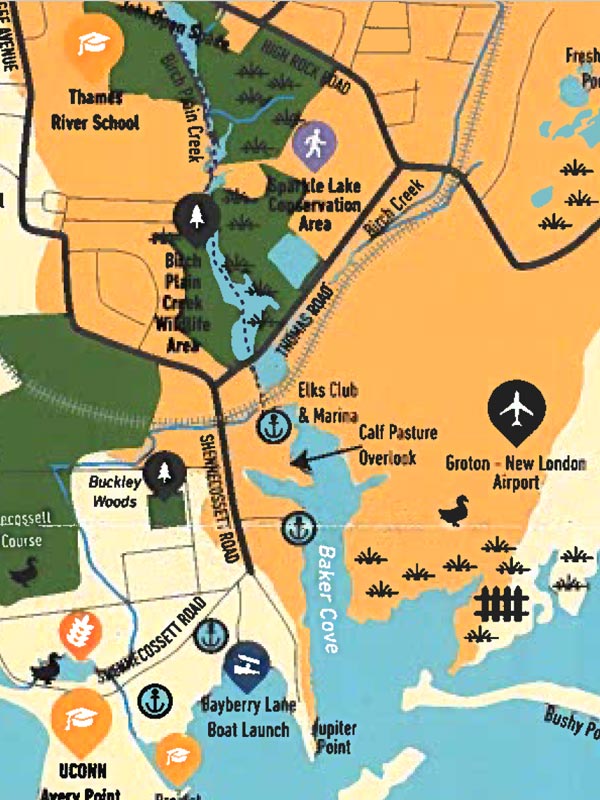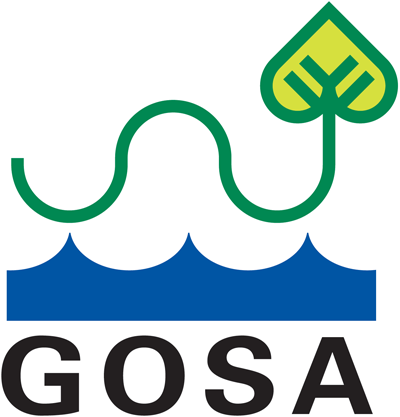Advocacy
As an important part of its mission, GOSA has informed the public about the value of open space, conservation, and environmental preservation. To be effective, GOSA has developed relationships with federal, state and local agencies to learn best standards and practices about environmental management. Board members attend conferences , training, and informational sessions sponsored by organizations such as the Land Trust Alliance, USDA Natural Resource Conservation Service, Connecticut Land Conservation Council, Eastern Connecticut Conservation District, University of Connecticut Extension Service, and Denison Pequotsepos Nature Center.
GOSA has developed relationships with other organizations with GOSA members and directors participating in many capacities including:
Connecticut Conservation Association (now Dennison Pequotsepos Nature Center), the Mashantucket Land Trust (now Avalonia Land Conservancy), TREES, Groton Environmental Education Committee , Council on Environmental Quality, Coastal Area Management Advisory Board, Groton Utilities Water Company, Eastern Connecticut Conservation District, Connecticut College, CT DEEP, Connecticut Botanical Society, Audubon CT, The Last Green Valley, Connecticut Forest and Parks Association, Friends of the Connecticut State Parks, CT Land Conservation Council, and the National Land Trust Alliance.
GOSA consults with soil scientists, biologists, civil engineers and participates in public land use commission hearings and state legislative hearings to advocate for environmental protection and responsible development in order to pursue the protection of wildlife habitats, fresh water streams, drinking water and Long Island Sound, including the Poquonnock River estuary, Mumford Cove and Palmer Cove from potential point and nonpoint source pollution, and flooding impacts.

Current
Help Clean Up the Baker Cove Watershed
Ways that businesses, places of worship, & community groups can help: MAP and Guide.
GOSA is a member of The Baker Cove Watershed Committee, a volunteer group working to reduce “non-point source” pollution in the waters that drain into Baker Cove, Groton, CT.
FOR MORE INFORMATION
860-319-8806
[email protected]
ECCD: 238 West Town Street, Norwich, CT 06360
Past Issues & Results
Sewer Outfall
A plan by the Town of Groton to re-route sewer outfall from Mumford Cove to the end of Bluff Point.
Result: Supported CT DEEP plan to re-route sewer outfall to the Thames River with its’ greater tidal flow, less construction impact to habitat.
Mystic Woods
A 290-unit Active Adult Community proposed for a location north of Route 1 on Fort Hill. GOSA intervened to promote lower impact development, hired a biologist and an engineer to reduce impact on Fort Hill Brook and Mumford Cove and to reduce flooding impact to the Poquonnock Plains neighborhood.
Result: Still vulnerable to development
Groton High Point (Sheep Farm)
A 34-lot housing development located on Hazelnut Hill Road. GOSA hired a biologist to work with developer’s engineers to come up with a forest preserve plan to reduce the impact on Fort Hill Brook and Mumford Cove.
Result: Ledge proved too expensive to develop. GOSA purchased the property.
Haley Farm Estates
A proposed housing development located along Palmer Cove. GOSA invited experts from Connecticut College and CT Department of Environmental Protection to explain threats to Palmer Cove.
Result: The Planning Commission imposed a 100 foot naturally vegetated buffer to reduce impacts from nitrogen and other nonpoint pollution.
Groton Town Public Works Land Use
The Town was actively expanding the land behind the Town Hall Annex for Public Works, Parks and Rec facilities and parking. The plan was to add contaminated road sweepings to the fill. In addition, there was already extensive erosion and contamination to Eccleston Brook and Mortimer Wright Nature Preserve from the open storage of road salt and sand. GOSA asked the Conservation Commission to investigate.
Result: The Conservation Commission recommended elimination of the use of road sweepings, improving the drainage system and constructing a salt shed. The hillside was stabilized, drainage improved, and contaminated sweepings were no longer used.
Mortimer Wright Nature Preserve
The Groton Parks and Rec Dept. proposed a logging operation on the Mortimer Wright Nature Preserve in order to pay for the new skateboard park. GOSA asked the Town Council to review the plan which targeted the oldest and largest trees and would not enhance existing wildlife habitat.
Result: The Town Council recommended against the logging plan and found alternative funding for the skateboard park.
Mystic Estates (The Merritt Family Forest)
A 79 lot project proposed south of Route 1 on Fort Hill. GOSA intervened for a lower impact development , hired soil scientist, biology expert, and engineer to reduce impact on Eccleston Brook and Palmer Cove.
Result: GOSA later purchased the property.
Four Winds at Mystic
An intensive Residential Life Care Community, 161 units on 105 acres, project proposed within extensive wetlands, west of Noank Ledyard Road and north of Bel Aire subdivision. GOSA intervened for a lower impact development , hired a soil scientist, biology expert, and an engineer to propose an alternative plan to reduce impact on Eccleston Brook and Palmer Cove.
Result: Still vulnerable to development
Big Box Store
A plan for a big box store proposed with drainage into Hempstead Brook, 750 feet away from Groton’s terminal reservoir system. GOSA intervened for alternative location or a lower impact development and hired an engineering expert. Other interveners hired an attorney and a water quality expert.
Result: The Planning Commission denied the application.
Great Brook Preserve Subdivision
A plan for 63 housing lots on 125 acres north of Route 184, close to the Great Brook, the main source for the Groton Reservoir system. GOSA hired a soil scientist and biologist and intervened to recommend a lower impact development.
Result: A lower impact plan with fewer homes was designed by the developer and GOSA, granting 5 acres to the Groton Utilities Water Company. Additional buffers were created to protect Great Brook, vernal pools and other wetlands.
Groton Airport Expansion 1960’s
GOSA director Sanford Meech formed the organization ROAR (Regional Organization for Airway restudy) to oppose a 1600 foot jet plane runway expansion to allow for overflow jet traffic from Kennedy Airport in New York.
First Earth Day April 15, 1970
GOSA President, Sidney F. Van Zandt and UCONN professor David McKain formed the EEC (Environmental Education Committee) to celebrate the first Earth Day. Events included boat rides from Avery Point to Pine Island with naturalist Robert DeWire. Ashore lectures were given on the environment including the demise of local osprey from DDT and opposition to the Jetport Industrial City proposed for the northeast corner of Connecticut.
Groton’s first recycling project: GOSA worked with Fitch teacher and GOSA Board of Director, Johnny Kelly and students of the Fitch Conservation Club. Barrels were installed at the Annex across from the High School to collect different colored glass for recycling. The project was successful enough to be taken over by the town public works.
An extensive collection of newspaper articles and reference materials is available at the Groton Town Library in the History Room describing the early efforts of GOSA and other environmental advocates.
